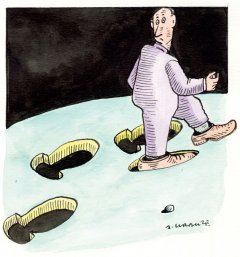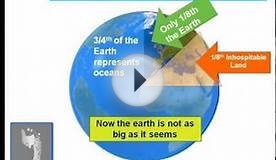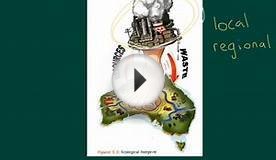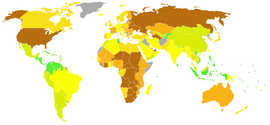What does Ecological footprint measure?
 We need 1.5 Earths to sustain our lavish lifestyles? Rubbish, says New Scientist's environment consultant: that's a publicity stunt which doesn't measure our overuse of resources
We need 1.5 Earths to sustain our lavish lifestyles? Rubbish, says New Scientist's environment consultant: that's a publicity stunt which doesn't measure our overuse of resources
HAVE you heard the one about the 1.5 Earths? Chances are you have: it is one of the most widely quoted ecological statistics of all, an easy-to-understand measure of our impact on the planet. Each year we consume 50 per cent more resources than Earth can regenerate. Scary.
The number has gained widespread currency, cited by governments, news media and in reports from United Nations agencies. But a recent analysis suggests that it is nonsense.
The idea first came to prominence in a 1996 book called Our Ecological Footprint by William Rees, an ecologist at the University of British Columbia, and his student Mathis Wackernagel. It is now owned and promoted by the Global Footprint Network (GFN), a small non-profit organisation of which Wackernagel is founder and president, in partnership with WWF, the world’s biggest environment group.
Every year they declare Earth Overshoot Day, the date “when humanity exhausted nature’s budget for the year” and began “drawing down local resource stocks and accumulating carbon dioxide in the atmosphere”. This year it was on 20 August, the earliest date yet.
It’s a nice publicity stunt. Unfortunately it’s piffle, says the Breakthrough Institute, another independent research group based a few blocks away from GFN in Oakland, California, with a well-earned reputation for environmental iconoclasm. The measurements behind the 1.5 Earths claim are “so misleading as to preclude their use in any serious science or policy context, ” it says in a paper in PLoS Biology.
I fear the criticism is right. The footprint analysis does not really measure our overuse of the planet’s resources at all. If anything, it underestimates it.
“The ecological footprint approach does not really measure our overuse of the planet’s resources”
The analysis tries to compare our demand for biological resources such as food, timber and fibres with the planet’s “biocapacity” – its ability to renew those resources. It does this by measuring the productive land and sea area available – cropland and pasture, forests and fishing grounds – and matching that against the demands placed on them. This biological accountancy system concludes that planet Earth has a biocapacity of 12 billion hectares, and a human demand equivalent to 18 billion hectares. Hence the 1.5 Earths figure. Our footprint is 50 per cent too big.
But dig into the numbers and problems quickly emerge. They begin with cropland and pasture, the two most important land categories for supplying food. GFN’s analysis finds that demand and biocapacity are in balance. Uncannily so, until you realise that it could not be otherwise. Cropland and pasture simply fill the land available.
I had assumed that the analysis assessed the damaging environmental consequences of how we use the land – things like soil erosion and the overuse of water reserves. But no. It only measures land area.


|
144 ways to reduce your organization's ecological footprint: A guide for small and medium sized organizations interested in adopting socially and ... practices (Middle English Edition) Book (Humus Amoris)
|
|
AceList® Glass Bottle Cutter Scoring Machine Cutting Tool Wine Bottle Cutter for DIY Reuse Recycle Bear Wine Bottle Jars Creating Stained Glass, Tumblers, Bottle Planters, Bottle Lamps, Candle Holders Home (AceList)
|
 The Happy Planet Index (HPI) is an index of human well-being and environmental impact that was introduced by the New Economics Foundation (NEF) in July 2006. The index is designed to challenge well-established indices of countries’ development, such as Gross Domestic Product (GDP) and the Human Development Index (HDI), which are seen as not...
The Happy Planet Index (HPI) is an index of human well-being and environmental impact that was introduced by the New Economics Foundation (NEF) in July 2006. The index is designed to challenge well-established indices of countries’ development, such as Gross Domestic Product (GDP) and the Human Development Index (HDI), which are seen as not...